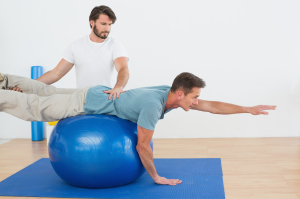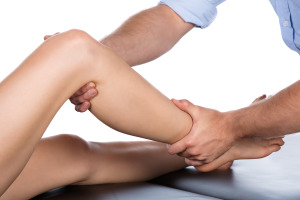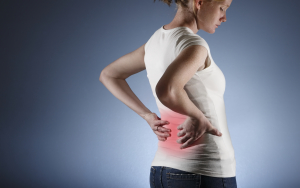Blog

Most people who suffer from migraines complain most about the intense headache – this type of migraine is called migraine without aura, and it’s the worse of the two types (the other one being migraine with aura).
A person suffering from migraine without aura also experiences most of the vestibular symptoms that migraine with aura has, along with other inexplicable symptoms like depression, craving sweets, etc.
For those who experience these discomforts, the quickest solution is medication. Over-the-counter pain relievers and prescription drugs typically work in alleviating the pain; however, the quick relief they offer typically does not last long.
Over time, migraine sufferers become immune to the effects of these drugs and require a more frequent or higher dosage to achieve the same relief that the previous recommended lower dosages used to provide.

If you suffer regularly from vertigo or general dizziness then you will understand how distressing and uncomfortable it can be.
Constant movement, nausea, possibly fainting, and a feeling of never being still, combined with the possibility of falls and bumping into things can plague your life, and if you don’t know what it is causing it, this can add worry to the situation too.
There are many possible causes for dizziness, and you may be prescribed medications to help minimise the effects, however as with any drug for any condition, these could come with attached side effects, which could make life unpleasant in other ways too.
Luckily help is at hand, without side effects.

Some types of injuries can cause chronic ongoing pain. Knee injuries have long been known for their ability to not only cause significant pain, but also leave the sufferer with a life-long issue of discomfort at certain times afterwards.
If you have ever had a knee injury then you will know that sickly feeling at the time of it happening, and the pain that comes afterwards; if you’re a professional athlete and you have had a knee injury, then you will understand the fear that it could potentially end your career.
The bottom line is that our knees bear an awful lot of our weight, and either through an accident or simple wear and tear, injuries happen. One of the most common is a meniscus tear, which is a tear to the part of the knee which cushions the joint, causing pain and discomfort.

When injuries get in the way of your sporting best, it can be frustrating to say the least.
Nobody is immune to suffering a sporting setback, whether it’s a freak injury, a build-up of wear and tear over time, or simply something you’re predisposed to, but for those who want to beat their personal best, avoiding such injuries is key.
If you’re a sporting enthusiast, or even a professional or semi-professional sports person, you will know how important it is to stay in top health, and how many different facets of your life can work together in order to avoid or minimise a sporting injury.

What is a slipped disc?
It’s important to start off by properly identifying what a disc is. Basically, it’s what cushions the 26 bones of the spinal column, a shock absorber so there’s no friction between bones.
A disc is made of two parts – the soft, gelatinous interior and a hard outer ring. When a person sustains an injury, the inner portion can protrude through the outer ring. This is a slipped disc.

Office work may not seem too physically demanding – you’re seated most of the time, working in front of the computer, reading documents, writing down your ideas, taking calls and even snacking every now and then.
Still, at the end of a long work day, you find yourself aching and the pain often originates from your neck, all the way to your lower back. You try to relieve it by doing neck rotations or massaging the affected areas but the relief is only temporary.

Back pain can be caused by a variety of things. Most of the time they’re the result of injuries but they can also develop due to certain disorders such as spinal stenosis.
Spinal stenosis is a disorder wherein spaces in the spine become narrow in three areas – the canal in centre of the spinal column, the canals at the base of the spinal cord, and the openings between the bones of the spine.
This places pressure on the spinal cord and nerve roots. The pressure then creates low back pain or numbness that may extend down the back of the legs, though in some cases, the pain or numbness radiates upward, reaching all the way to the shoulders which can be intensely uncomfortable and lead to mobility problems.

Core stability is something that has become much more well known in recent years. The trouble is that with the increase in popularity there has been a lot of misinformation.
There is a muscle called your transversus abdominus that wraps around your stomach and attaches into the lower back and the pelvis.
This muscle combined with your pelvic floor and diaphragm muscles, make up the muscles involved in core stability.
What is supposed to happen is that when we move and lift, these muscles are supposed to contract and stabilise our lower back.
Unfortunately what often happens is that these muscles become deconditioned through injury or disuse. As a result the lower back doesn’t have the stability that it needs to move and it is therefore more prone to injury and damage.
Core stability focuses upon improving the function of these muscles.

The knee is an important part of the body and at the same time one of the most problematic parts of the body. It bends and extends to allow us to perform activities like walking, running, kicking, and sitting.
Balanced and coordinated motion of the three bones, three compartments, two menisci, four ligaments, cartilage, muscles, and tendons allow the knee to move optimally and pain free. If any of these parts are injured, the knee may hurt and won’t be able to do its main purpose.

Back pain is often associated with aging – the inevitable discomfort created by the slowed-down internal workings of the body that diminish flexibility.
Likewise, back pain is proof that the body has already sustained much wear and tear. Therefore, it’s crucial for everybody who considers himself/herself no longer a “spring chicken” to be particularly thoughtful and careful, because the most common causes of back pain among older folks are usually the most trivial ones.

